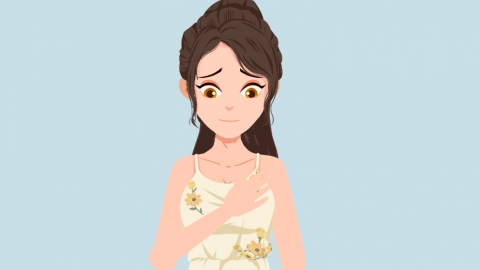What does it mean when a woman's breasts hurt?
Generally, female breast pain may be caused by premenstrual syndrome, pregnancy-related changes, mammary hyperplasia, mastitis, or mammary duct ectasia. It is recommended to seek timely medical advice and undergo treatment under a doctor's guidance. Detailed analysis is as follows:

1. Premenstrual Syndrome
Prior to menstruation, fluctuations in estrogen and progesterone levels occur in a woman's body. Elevated estrogen levels can lead to breast tissue proliferation and edema, increased breast sensitivity, and consequently breast pain. This pain typically gradually subsides or disappears after the menstrual period begins. Women should maintain a pleasant mood before menstruation, avoid significant emotional fluctuations, and relieve stress through activities such as listening to music or walking.
2. Pregnancy-related Changes
After pregnancy, hormonal levels in a woman's body change. Large amounts of estrogen, progesterone, and prolactin are secreted, promoting the proliferation of breast ducts and alveoli, gradually enlarging the breasts, and causing a feeling of breast fullness and pain. Appropriate breast massage can be performed to promote blood circulation, but care should be taken to ensure moderate pressure and avoid excessive stimulation.
3. Mammary Hyperplasia
Mammary hyperplasia mainly results from endocrine disorders and an imbalance between estrogen and progesterone levels, leading to excessive proliferation and incomplete regression of breast parenchyma. This overgrowth and disarray of breast tissue causes breast pain, and symptoms such as palpable breast nodules or lumps may also appear. Patients should follow medical advice to use medications such as Ruping Xiaojie tablets, Xiaoyao pills, or Xiaojin pills to alleviate discomfort.
4. Mastitis
Mastitis is often associated with factors such as immune dysfunction and breast duct dilation. Inflammation may irritate the breast, causing localized redness, swelling, and pain, and may also be accompanied by symptoms such as fever and chills. Patients may use medications such as amoxicillin capsules, cefuroxime sodium for injection, or azithromycin dispersible tablets under a doctor's guidance.
5. Mammary Duct Ectasia
Mammary duct ectasia may be related to factors such as ductal excretion disorders and abnormal hormonal stimulation. The mammary ducts dilate, their walls thicken, and secretions accumulate, triggering an inflammatory response and causing breast pain. Symptoms such as nipple discharge and swollen axillary lymph nodes may also occur. Patients may use medications such as metronidazole tablets, cefixime capsules, or Xiaojin capsules as advised by a doctor.
In daily life, women should maintain good habits, follow a regular routine, and avoid staying up late. They should choose appropriate undergarments and avoid wearing overly tight bras that compress the breasts. Additionally, regular self-examinations of the breasts should be performed, and any abnormalities should prompt timely medical consultation.






